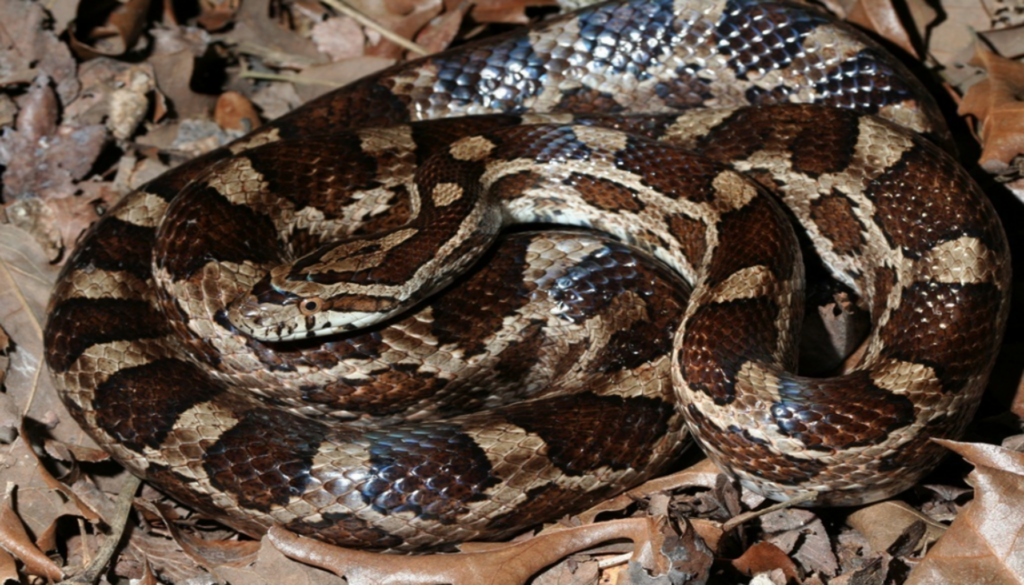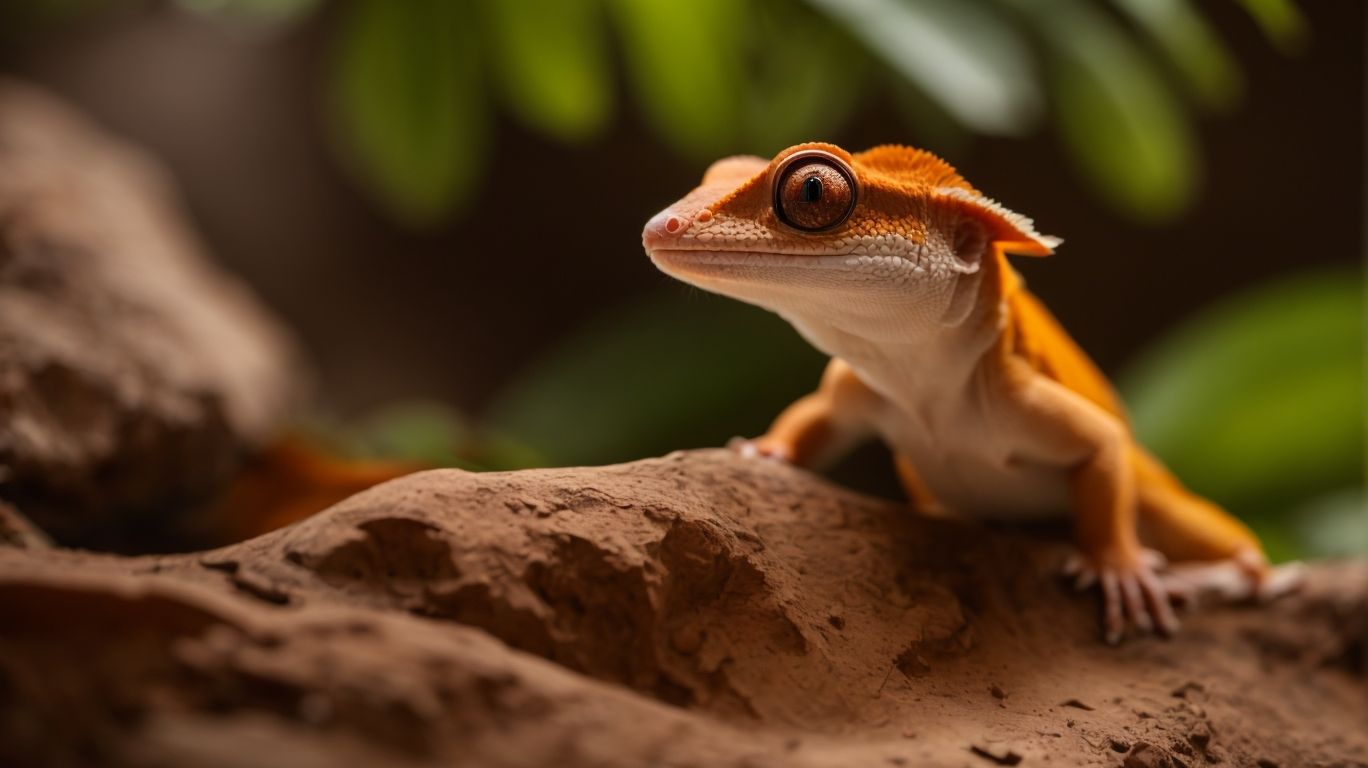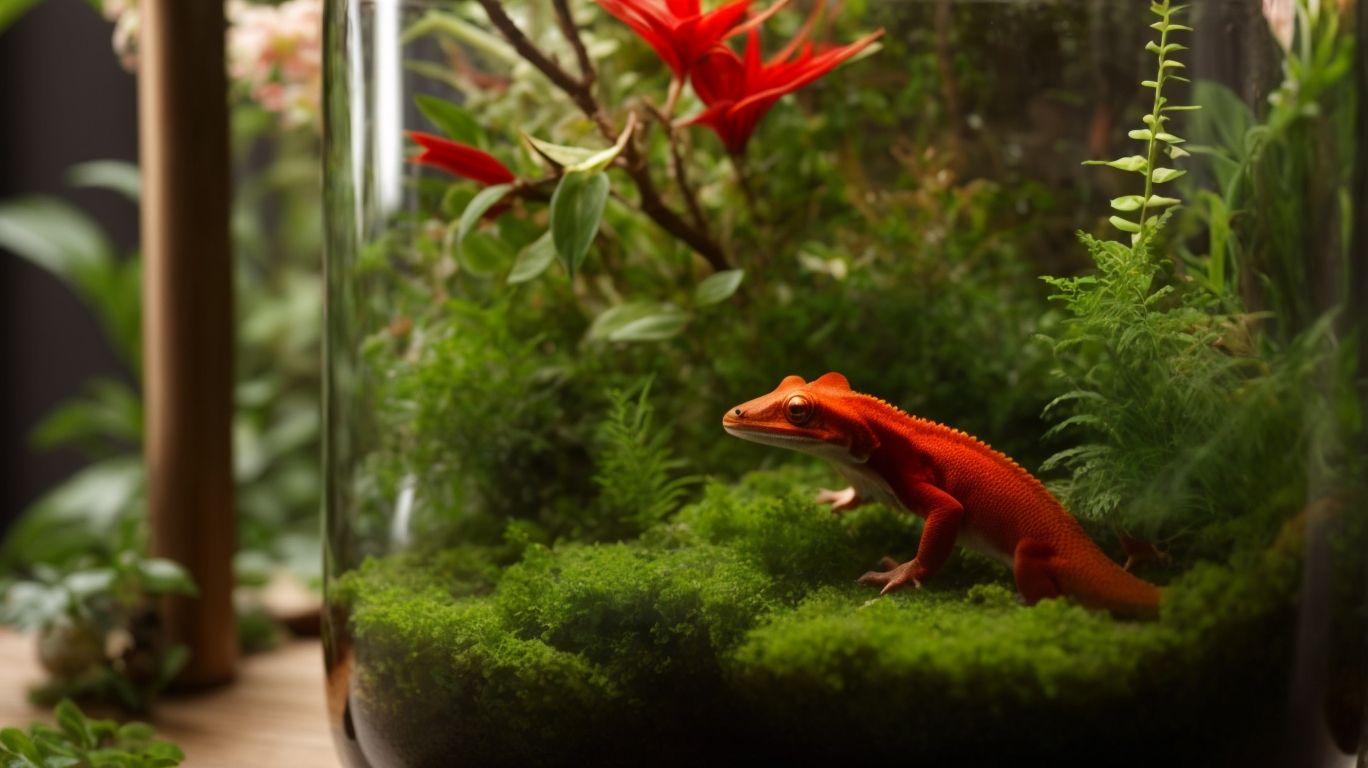
Slowinski’s Corn Snake: A Beginner’s Journey to Pet Snake Ownership
Table of Contents
Unveiling the Slowinski's Corn Snake
Meet the star of our show, the Slowinski’s Corn Snake, a captivating species that goes by the scientific name, Pantherophis slowinskii. With a lineage tracing back to the Southeastern corners of the United States, this species is often misidentified as its close relative, the traditional corn snake. But do not be fooled, the Slowinski’s Corn Snake has an individual allure and character that set it apart.
While they may share a family resemblance, our star has distinct features and idiosyncrasies that make it stand out from its cousin. Just like people, no two snakes are the same, and the Slowinski’s Corn Snake certainly proves that! From their specific patterns to their unique behaviors, these creatures truly deserve the spotlight.
Slowinski’s Corn Snake is medium-sized and colored grayish-brown, with a series of large, alternating, chocolate-brown blotches. These blotches are often bordered in black. It has a spearhead marking on the head. The belly is checkered black and white, giving it an appearance of maize.
Dive deeper and uncover the distinct attributes of this one-of-a-kind snake breed. Notice the subtle nuances in its behavior, the unique marks on its scales, and the charming personality that sets it apart from the rest. Embrace the mesmerizing world of the Slowinski’s Corn Snake, and let’s continue exploring this exciting journey into pet snake ownership.
Shedding Light on Slowinski's Corn Snake's Behavior
For those venturing into the world of pet snake ownership, the Slowinski’s Corn Snake offers a captivating initiation. These creatures boast a strikingly mild disposition that sets them apart from many other species. Born from the wild but built for cohabitation, the Slowinski’s Corn Snake is rarely on the offensive, making them an ideal choice for first-time snake owners.
These snakes are animated and explorative by nature, with a heightened sense of curiosity that’s particularly noticeable during the twilight hours. Come dusk or dawn, don’t be surprised to find your Slowinski’s Corn Snake actively slithering around their habitat, investigating every nook and cranny.
It’s crucial to note, though, that while they are mostly peaceful, understanding and respecting their space, especially during shedding or feeding time, is fundamental to a harmonious relationship. Observing their behavior and respecting their unique needs will allow for a rewarding pet-owner bond that’s sure to evolve over time. So, embark on this thrilling journey and immerse yourself in the fascinating behavioral nuances of the Slowinski’s Corn Snake.
The Essential Role of Diet on Slowinski's Corn Snake
Food. It’s one of the universal keys to life, including for our captivating Slowinski’s Corn Snake. Proper nutrition is paramount, as it impacts their health, longevity, and overall behavior. As a primarily carnivorous species, these snakes exhibit a preference for feasting on mice and small rodents, akin to their wild counterparts.
But there’s a trick to feeding your Slowinski’s Corn Snake. See, the size of their prey should be in harmony with the size of their head. Why? This ensures the snake can comfortably consume and digest its meal, avoiding potential health risks associated with oversized prey.
Just like us humans, variety is the spice of life for these snakes. While mice might be their staple, occasionally adding small birds or reptile eggs to their menu can offer much-needed variety and ensure a balanced diet. Remember, a well-fed snake is a happy snake!
You might be wondering, how often should you feed your Slowinski’s Corn Snake? As a rule of thumb, juveniles need a meal every 5-7 days, while adults can be fed every 7-10 days. Of course, always monitor your snake’s behavior and adjust the feeding schedule as necessary. You’ll soon discover the joy of seeing your Slowinski’s Corn Snake well-nourished and thriving in its habitat.
To ensure you’re serving your pet the most nutritious meals, opt for high-quality, commercially bred feeder animals. And remember, never offer your snake live prey unless necessary. The stress of the hunt can lead to potential harm for both your snake and its meal.
Navigating the dietary needs of your Slowinski’s Corn Snake might seem like a challenging task at first, but with time, patience, and practice, it’s sure to become second nature.
Understanding the Ideal Habitat of Slowinski's Corn Snake
Creating a cozy home for your Slowinski’s Corn Snake begins with understanding its natural environment. In the wild, these intriguing creatures are accustomed to the warm, moderately humid climes of the Southeastern United States. To replicate these conditions and keep your pet snake comfortable, aim for a similar climate in their habitat.
An ideal snake tank is more than just a container; it’s a carefully crafted ecosystem. Equipping the enclosure with a heat lamp on one side will ensure a comfortable temperature gradient, allowing your Slowinski’s Corn Snake to regulate its body temperature as needed. A consistent humidity level, usually achieved by misting the tank regularly, will support their shedding process and overall health.
Remember, a snake’s enclosure is its world, so it’s critical to make it as enriching as possible. Hide spots and climbing branches are excellent additions to the habitat. These offer your pet a sense of security and opportunities for physical activity, mimicking their natural behavior in the wild.
While setting up the habitat, be mindful to select a substrate that is safe and comfortable for your Slowinski’s Corn Snake. Aspen shavings, newspaper, or reptile carpet can serve as ideal bedding. But remember, cedar shavings should be avoided as they can cause respiratory problems for your snake.
Lastly, consider the size of your pet’s home. It should be spacious enough for your snake to move around freely and grow comfortably. Remember, the size of the enclosure should correlate with the size of the snake.
Creating an ideal habitat is like painting a picture of your pet’s natural environment. Your Slowinski’s Corn Snake will appreciate the effort and reward you with a lively display of their natural behaviors.
Healthcare for Slowinski's Corn Snakes
Just as you would for any beloved pet, it’s crucial to prioritize the health of your Slowinski’s Corn Snake. Stepping into this aspect of snake ownership involves routine health check-ups, an optimal diet, and maintaining a pristine living environment. These are key steps in staving off potential health concerns.
Even though these creatures are hardy by nature, they are not entirely immune to illness. Certain conditions such as respiratory infections, skin mites, or mouth rot can potentially befall your snake. While these may sound daunting, the good news is that with early detection and appropriate veterinary intervention, most of these ailments can be effectively managed.
In the realm of pet snake ownership, the adage “prevention is better than cure” rings particularly true. Routine visual checks can often unveil signs of potential health issues. Look out for symptoms such as irregular skin shedding, loss of appetite, or changes in the color or consistency of your snake’s waste. If you notice any of these signs, seek advice from a reptile-specialist veterinarian promptly.
The importance of finding the right vet cannot be overstressed. A knowledgeable reptile vet can provide invaluable advice, monitor your snake’s growth, and recommend preventive care measures tailored specifically for your Slowinski’s Corn Snake. They can also conduct routine health screenings to ensure your pet is in its prime health.
Keeping your snake’s habitat clean is equally essential. A tidy environment can limit the risk of parasites and promote your pet’s overall well-being. Regular spot cleaning, along with thorough sanitization every few weeks, should keep your snake’s home in tip-top condition.
Balancing these elements of healthcare might seem like a tall order at first, but rest assured, with time and patience, you will become an adept caregiver for your Slowinski’s Corn Snake.
Busting Common Myths
When it comes to snakes, many myths and misconceptions abound, born out of fear or simply a lack of accurate information. A prevalent fallacy is that all snakes are venomous and pose a significant danger to humans. However, this couldn’t be further from the truth when it comes to the Slowinski’s Corn Snake.
These delightful creatures are non-venomous, posing no venom-related threat to their human caretakers. While it’s true that they, like all animals, can become defensive when feeling threatened, they generally exhibit a mild and peaceful demeanor. Particularly in the case of the Slowinski’s Corn Snake, they are more likely to explore and investigate their surroundings than display any form of aggressive behavior.
Another common myth is that snakes are slimy. But have no fear, the Slowinski’s Corn Snake, like all snakes, has dry and smooth scales. The sensation of holding one is often compared to touching a cool, dry, beaded purse, not a slippery garden slug.
There’s also the misconception that snakes are “low-maintenance” pets, requiring minimal care and attention. While they might not need daily walks like dogs, the Slowinski’s Corn Snake, as we’ve explored in previous sections, does need consistent care, including a suitable habitat, a proper diet, and regular health check-ups.
Finally, some believe that snakes are solitary, emotionless creatures. While it’s true that they don’t show affection in the same way a dog or cat might, many snake owners, including those of the Slowinski’s Corn Snake, report unique personalities and behaviors in their slithery companions. It just takes time, patience, and a keen observation to appreciate their subtle forms of interaction.
Dispelling these myths helps us appreciate the unique charm and characteristics of the Slowinski’s Corn Snake and the remarkable journey of pet snake ownership.
The Lifelong Commitment
Embracing the world of the Slowinski’s Corn Snake isn’t a fleeting decision—it’s a journey that can span two decades, given their life expectancy of up to 20 years with proper care. As a potential snake owner, it’s essential to acknowledge this lifelong dedication, which goes beyond providing an optimal habitat and balanced diet. It’s about committing to their wellness, understanding their unique behavioral patterns, and honoring their distinct needs.
The gratification that comes from nurturing these captivating creatures is hard to quantify. Observing their curious exploration, deciphering their behavioral cues, and watching them thrive under your care is a truly enriching experience. These long-lived reptiles will become an integral part of your life, revealing more of their intriguing nature with each passing year.
But remember, this journey of snake ownership isn’t a solo one. It involves a collective effort, including availing services of a reliable reptile vet, relying on quality feeder animal suppliers, and constantly learning from the vast community of snake enthusiasts. It’s about engaging, sharing, and evolving on this fulfilling journey.
In summary, opting for a Slowinski’s Corn Snake as a pet means welcoming a captivating new member into your family, one that requires a substantial commitment of time, energy, and resources. Yet, the returns—a deepened appreciation for these fascinating creatures, a unique companionship, and the pure joy of nurturing a life—are undoubtedly worth it. So, if you’re ready to embark on this long-term adventure, buckle up and prepare for the incredible journey that is owning a Slowinski’s Corn Snake.
Related Posts

Incubating Crested Gecko Eggs: Essential Techniques and Tips
Crested geckos are fascinating reptiles that are known for their…

Red Crested Gecko Health: Common Issues and Preventive Care
Are you a proud owner of a red crested gecko?…

Creating the Ideal Environment for Your Red Crested Gecko
Do you own a red crested gecko or are you…

No Comments